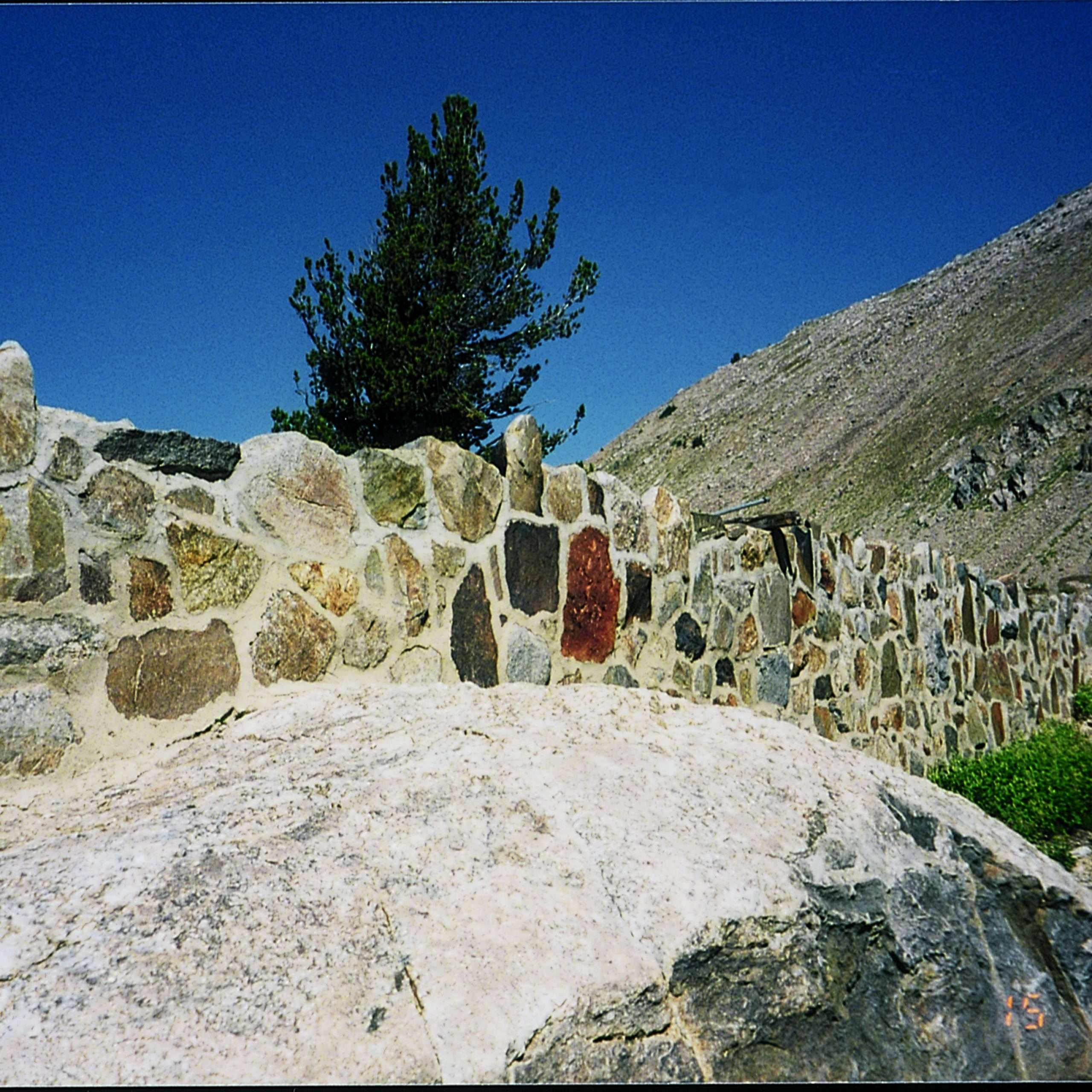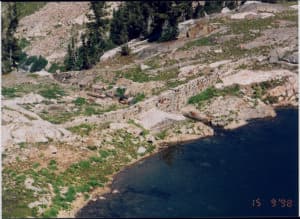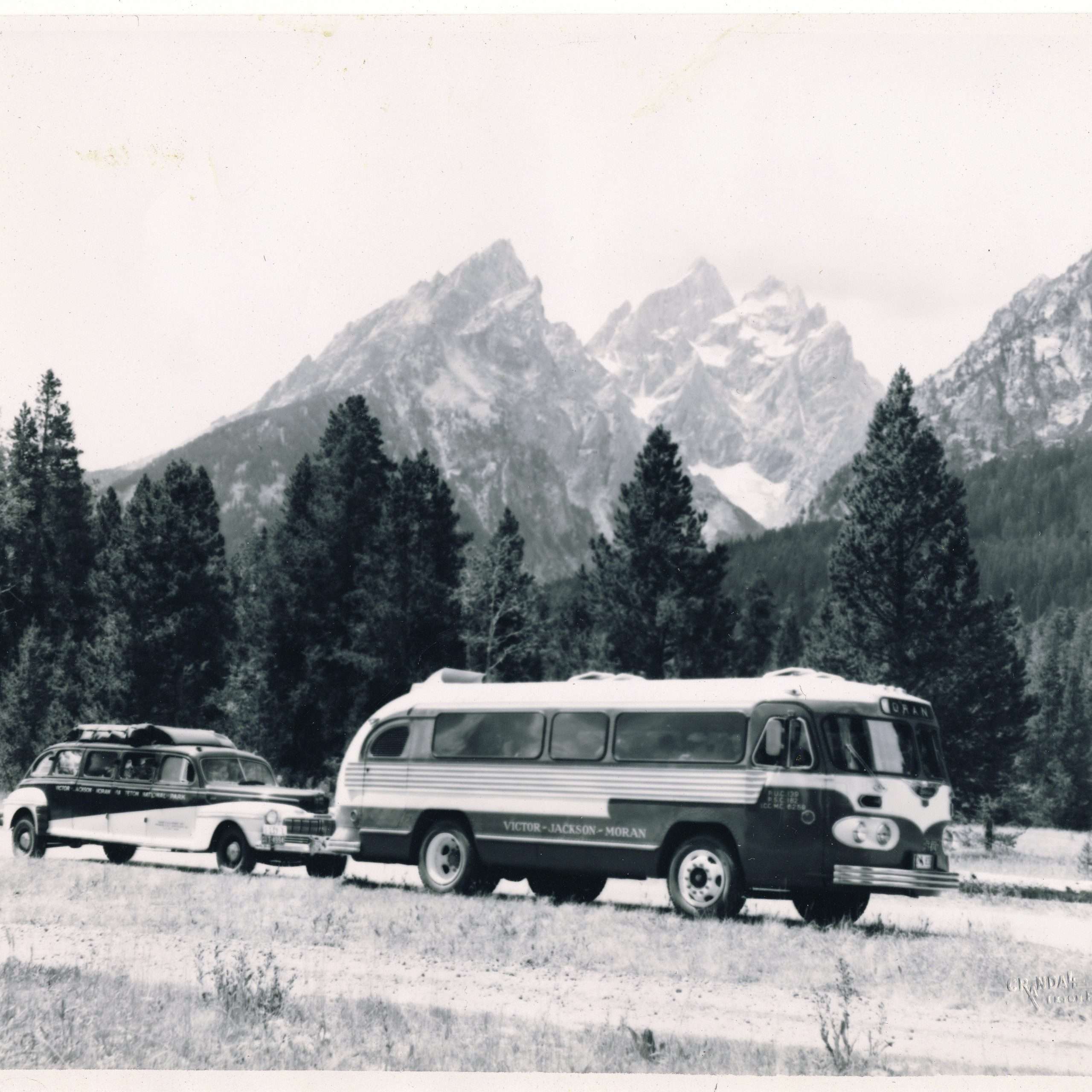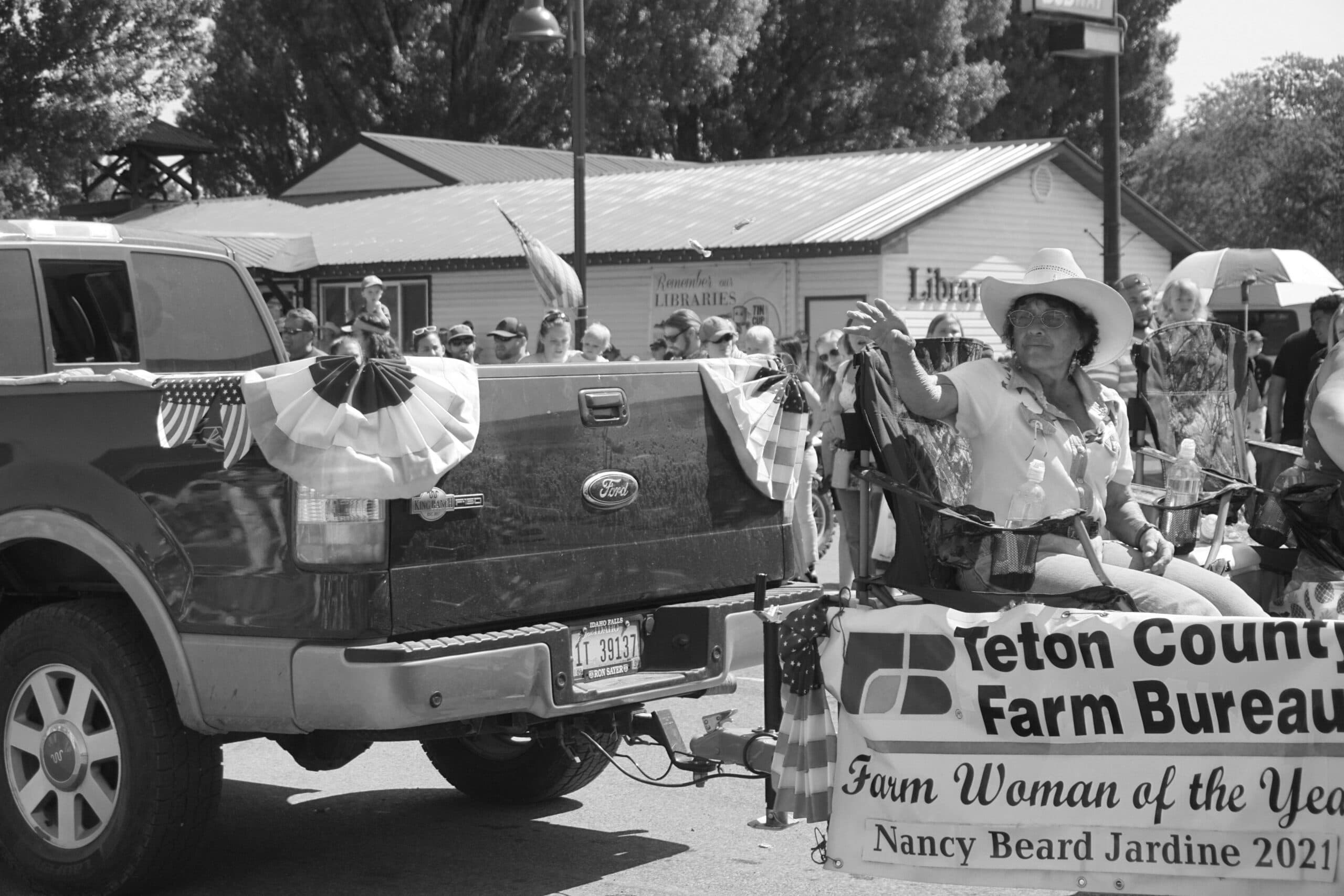Captured in Stone

The dam at Hidden Lake (aka Secret Lake and Skinny Dip Lake) was built in 1933, according to Dr. Grant Wilson of Alta, Wyoming, whose father T. Ross Wilson, engineered the structure. (T. Ross Wilson was also principal of Teton High School for 30 years.)
Wayne Green of Alta and St. George, Utah, says the dam was one of several Works Progress Administration (WPA) projects built in Teton Valley during the 1930s. The WPA was a federal work program designed to employ people during the Depression. “People were out of work so they did work projects to get a little money circulating,” Green explains.
The original hospital building, which now houses the Teton Valley Medical Clinic, is the most visible WPA project in Teton Valley. It was built in 1938.
Green, whose father, George B. Green, helped build the Hidden Lake dam, says the structure was just one of the many high-elevation water storage projects planned for the west slope of the Tetons during the 1930s.
Water storage is an internal challenge for farmers, especially in a place like Teton Valley where enormous volumes of water are lost downstream during spring run-off. There has been a continual search for ways to hold the water until late summer, when it is needed.
The authors of the History of Teton Valley write: “The possibility of storing water by constructing reservoirs has been explored for all the major streams in the valley. No suitable sites have been found because of high costs and relatively small storage capacities. A small earth-fill dam with about 500 acre feet storage capacity was built on Packsaddle Creek in 1909…The dam overtopped and washed out in 1916…and wasn’t reconstructed.
The potential for using high-elevation lakes to store water may have become especially attractive during the ‘30s because of the drought that affected the nation, and the Valley, during those years. But at least one high-altitude project was completed before the drought and depression.

Clendon Gee of Sugar City believes that an earth dam, canal and connecting ditch found at the south Leigh lakes, about four miles east of Grand Targhee Resort, were built in the 1920s. He says the structures were constructed by farmers with an interest in the Hog Canal, which draws water from South Leigh Creek.
Green says projects planned during the 1930s included structures in the upper reaches of North and Sough Leigh Creek canyons, as well as the upper Teton Canyon dam. Engineering for all of these projects was performed by T. Ross Wilson. “He did the surveying and the locating of them, and figuring how much water they’d hold and how big the lakes would be,” Green recalls.
“They were doing it to conserve water until fall,” he says. “It was a good idea then and it’s a good idea still…but the people out below (in the Rexburg/Idaho Falls area) had superior water rights, so they put a kibosh on it so they couldn’t put a dam on those lakes and hold the water in.”
Western water law decrees that “first in time is first in right,” which means that earlier settlers have older water rights than later settlers. Typically, the first pioneers settled at lower elevations where the climate was more favorable for farming. Subsequent immigrants moved to higher elevations where land was still available. The Teton Basin, at about 6,200 feet, was settled several years after the 4,000-5,000-foot elevation Rexburg/Idaho Falls/Pocatello area. Consequently, farmers “out below” have water rights superior to those in Teton Valley. The earliest decreed water rights in Teton Valley date to 1886.
When farmers out below learned above the Hidden Lake dam and other proposed projects, they felt their water rights were threatened. They were afraid that water captured high in the Tetons would reduce run-off flows to the point that lower elevation reservoirs would fail to fill. Consequently, they “put a kibosh” on the high-altitude projects.
Green says some work was accomplished at Granite Basin and above Green Lake before the halt was called. “They deepened the outlets on several lakes. They used dynamite and lowered the outlets and then were going to build them up so they could lower the lake even lower, but they never did get it done,” he says.
The dam at Hidden Lake was the only structure actually completed, although it was never put to use.
Building the Dam
A crew of eight-10 men built the Hidden Lake dam during the summer of 1933. Besides his father, Green can only remember the name of one other crew member, Billy Beard.
The crew spent the entire summer working on the dam and on the Granite Basin and Green Lake projects in the upper Leigh Creek canyons. Green says they “were up there until October, when it snowed them out.”
The men used pack horses with panniers to haul sand and mortar up to the lake. They used sand from nearby streams but hauled mortar all the way up from the valley floor. Stones were gathered on site. All the mortar was mixed by hand.
Despite the heavy traffic that must have occurred on the route to Hidden Lake, there is no longer any sign of a trail. Green says a snowslide, “that took down a lot of 100-year old trees,” occurred about 1937 and obliterated the trail.
There was no head stonemason in charge of the project. “They were all pretty good at the stonework,” remembers Green. “I think they just all worked at it together.” The quality of their craftsmanship is evident. The 8-foot-wide dams show no sign of damage, even after 65 years of high-altitude weather extremes.
The men spent about a week at a time in the mountains, then returned home for more groceries. They camped next to their worksite, sleeping in tents on beds made of quilt-covered pine boughs. They took turns doing the cooking and, according to Green, “ate a lot of spuds and wild chicken (blue grouse). That’s blue grouse country up in there…there wasn’t any deer or elk around then…and there were no fish in Green Lake.” When Billy Beard shot a cub bear up in South Leigh, they “used it for part of their groceries.” The men also had pancake flour and bacon.
Green remembers that his father definitely enjoyed his summer of work on the high-altitude water projects. “Dad was a mountain man and oh, yeah, he enjoyed working up there.” After the WPA project ended, George B. Green resumed his various occupations of rancher, sheep shearer, taxidermist and trapper.
Remnants of the work can still be found above Green Lake and in Granite Basin. And those who venture off trail above the north fork of Teton Canyon continue to be surprised and amazed when they stumble across the beautiful stone dams at Hidden Lake.
“Amazing!” we exclaimed, after topping the ridge and gazing down on the 9,800-foot-elevation lake in the Tetons. A beautiful stone dam up to 12 feet high stretched nearly 60 feet across the outlet of the lake with a second, smaller dam located further north along the shore. The improbable sight staggered our imaginations.
We were a couple miles off trail about six miles from the Teton Canyon trailhead and two-thirds of a mile above the valley floor. A dam was the last thing we expected to find at this remote, high-altitude location. I determined to find out how it came to be built.




